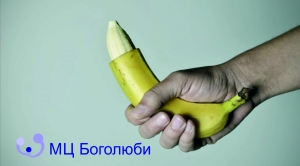Circumcision is a very ancient surgical practice, which involves the complete removal of the foreskin, as a result of which the head of the penis remains completely open.
In Christian culture, circumcision of newborns is not common, unlike Muslims. In Ukraine, circumcision is not carried out for religious purposes. As a rule, the reasons prompting men to undergo this practice are completely different.
Firstly, there are preventive hygienic prerequisites for intervention: micro-leakage of urine and smegma are considered a risk factor in the development of balanitis, postitis and balanoposthitis, as well as other inflammatory diseases of the genital organs. Secondly, some men are driven by a desire to improve the aesthetics of their genitals or a desire to feel greater arousal during intercourse. Thirdly, some patients need circumcision to solve the problems of phimosis, paraphimosis or premature ejaculation.
Other disorders that can be resolved or improved by circumcision include:
- fibrous sclerosis of the penis;
- hypospadias;
- urethral stricture.
Circumcision and premature ejaculation
Hypersensitivity to the penis balanus is the most common cause of premature ejaculation. In men with a similar problem, even mild sexual arousal is enough to stimulate an orgasm. This is because the nerve fibers responsible for conducting stimulating signals cause muscle contractions, therefore, the smooth muscle that covers the seminal pathways stimulates the release of sperm. To overcome this shortcoming, a man after an andrological visit may decide on circumcision. Specialists of Bogoliuby MC successfully perform this intervention.
Circumcision and sexually transmitted diseases
Recent discoveries in the medical and scientific field are quite interesting: circumcision can help reduce the risk of contracting sexually transmitted diseases. American scientists have proven that the likelihood of infection, for example, HIV is reduced by at least 60% after removal of the foreskin. Apparently, the anatomical region of the foreskin has ideal characteristics for the introduction of the virus, therefore, due to its removal, the virus does not find the necessary conditions for life. This fact is confirmed statistically: among women with circumcised partners, the number of HIV infections is 30% less.
It should be noted that circumcision is not used to prevent chlamydia, syphilis and gonorrhea. Regarding the possibility of reducing the risk of infection with the human papillomavirus after circumcision, there are conflicting points. Some experts believe that circumcision can be considered a preventive practice against HPV, while others question it.
Before surgery, the patient must undergo an examination by a urologist, and if necessary, a dermatologist. Anesthesia is local. The duration of the operation is 40 minutes.
Contraindications to circumcision
Not all patients have circumcision. Contraindications include:
- problems with blood coagulation;
- venereal diseases;
- malignant neoplasms and benign tumors of the genital organs;
- balanoposthitis.
Rehabilitation after circumcision
After circumcision, abstinence from sexual intercourse and sports for four weeks is recommended so that the wound surface heals completely. Sutures dissolve themselves, usually after a couple of weeks. A decrease in sensitivity at the level of the head with a relative thickening of this area occurs after about a month.
The patient should be prepared for some of the consequences of the intervention so that they do not become an unpleasant “surprise” for him. Possible swelling and redness, pulling pains at the wound site, discomfort during urination and when touching the penis of underwear.
In order for the rehabilitation period to pass effectively and quickly, a preventive course of antibiotics is prescribed, in case of pain - analgesics.
















